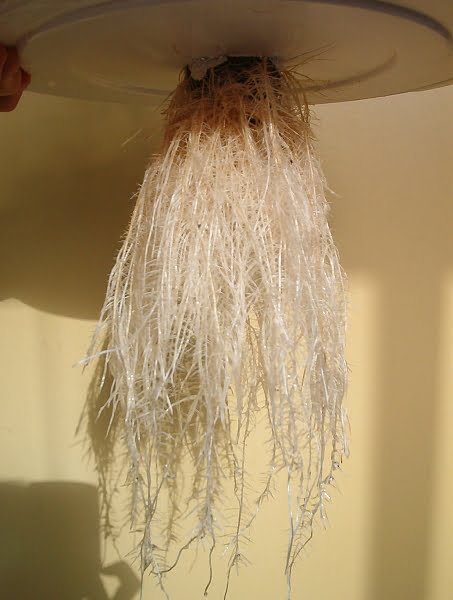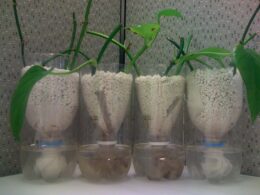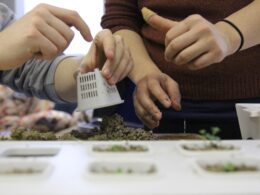Are you curious about what happens when you let lettuce grow too long? Maybe you’ve forgotten about a head of lettuce in the fridge or left it in the garden a little too long. Whatever the reason, it’s important to know the potential consequences of letting your lettuce overgrow.
If you’re someone who values nutrition and freshness, you’ll want to pay attention to the effects of overgrown lettuce. Not only can it affect the texture and taste, but it can also impact the nutritional value. Plus, overgrown lettuce can attract pests and diseases, making it less safe to eat.
In this article, we’ll explore what happens when you let lettuce grow too long, provide some harvesting and storage tips, and offer advice on how to prevent overgrowth in the first place.
So, let’s dive in and learn more about the dangers of overgrown lettuce.
Changes in Texture and Taste
When you wait too long, the texture and taste of your lettuce won’t be as crisp and fresh, leading to a less enjoyable meal experience.
Texture changes are one of the most noticeable effects of letting lettuce grow too long. Instead of being crunchy and refreshing, the leaves become wilted and limp. The texture becomes unpleasant and unappealing, making it harder to enjoy your salad.
Furthermore, taste degradation is another issue that can arise when you let lettuce grow for too long. As the lettuce ages, it loses its freshness and flavor. The taste becomes bitter and less vibrant, and the overall quality of the lettuce deteriorates. This can make your meal less enjoyable and can lead to a less healthy diet overall.
It’s important to keep in mind that when you let lettuce grow too long, you’re not only sacrificing the texture and taste but also the nutritional value. Old lettuce has fewer nutrients and vitamins than fresh lettuce, which can impact your health.
So, it’s best to harvest your lettuce when it’s at its prime to ensure you’re getting the most out of your meal.
Nutritional Value
Discover the amazing nutritional benefits that come with consuming fresh lettuce! When you let lettuce grow too long, it may lose some of its crispness and flavor, but did you know that it can also lose some of its nutritional value?
To ensure that you’re maximizing the nutrients in your lettuce, it’s best to consume it when it’s fresh and vibrant. Lettuce is a low-calorie vegetable that’s high in fiber, vitamins, and minerals. It’s an excellent source of vitamin K, which is essential for blood clotting and bone health. Additionally, it’s rich in vitamin A, which is crucial for healthy vision and immune function.
By consuming fresh lettuce, you can be sure that you’re getting the most out of this nutritious vegetable. When it comes to cooking methods, it’s important to note that overcooking or boiling lettuce can reduce its nutritional value. To get the most out of your lettuce, try incorporating it into salads or lightly sautéing it with other vegetables. This will preserve its nutritional value and ensure that you’re getting the most out of this healthy and delicious vegetable.
By consuming fresh lettuce and incorporating it into your meals in a way that maximizes its nutritional value, you can ensure that you’re getting all the amazing health benefits that this vegetable has to offer. So, next time you’re deciding whether to use that slightly wilted lettuce, remember to prioritize freshness for the best nutritional value.
Can Lettuce Grow Too Long in Hydroponic Systems and Result in Nutrient Deficiency?
Hydroponic systems provide controlled environments for growing plants, but can hydroponic plants and nutrient deficiency be related? Lettuce, a commonly grown hydroponic crop, may indeed suffer from nutrient deficiency if left to grow for too long. As lettuce matures, it tends to prioritize reproductive growth over nutrient uptake, leading to reduced nutrient absorption and potential deficiencies. Timely harvesting ensures optimal nutrient content and quality in hydroponic lettuce.
Pests and Diseases
If you let your lettuce grow too long, you’ll increase the risk of infestation by pests and the spread of diseases.
Pests such as aphids and caterpillars thrive in overgrown lettuce and can quickly destroy your crops.
Diseases such as lettuce downy mildew and powdery mildew can also spread rapidly in overcrowded and damp conditions.
Increased Risk of Infestation
Watch out! Leaving your leafy greens in the garden for too long can attract unwanted pests and increase the chances of an infestation. As lettuce grows older, it becomes more susceptible to diseases and pests such as aphids, slugs, and snails.
These pests are attracted to the weakened state of the plant and can quickly multiply, causing damage to the entire crop. To prevent this, it’s important to harvest lettuce at the right time and avoid leaving it in the garden for too long.
If you do notice an infestation, it’s important to take action immediately. Pesticide use can be effective, but it’s important to follow instructions carefully to avoid harming beneficial insects and other wildlife.
Crop rotation is another effective way to prevent infestations. By rotating crops, you can disrupt the pest’s life cycle and reduce the likelihood of an infestation.
So, be sure to keep a close eye on your lettuce and harvest it when it’s at its peak to avoid unwanted pests and ensure a healthy crop.
Spread of Disease
Don’t let all your hard work go to waste – keeping your lettuce healthy and disease-free is crucial to a successful harvest. If you let your lettuce grow too long, it can become more susceptible to diseases that can ruin your entire crop.
To prevent this, it’s important to take preventative measures and control methods to keep your lettuce healthy. One of the best preventative measures is to practice good crop rotation. This means not planting lettuce in the same spot every year, as this can lead to a buildup of diseases in the soil.
Additionally, make sure to water your lettuce properly and avoid overhead watering, as this can lead to the spread of disease. Finally, keep an eye out for any signs of disease, such as yellowing leaves, and remove any infected plants immediately to prevent the spread.
By taking these preventative measures and control methods, you can ensure that your lettuce stays healthy and disease-free, leading to a successful harvest.
Harvesting and Storage Tips
Get the most out of your lettuce by knowing the best ways to harvest and store it. Proper timing is key to harvesting lettuce at its peak. Generally, lettuce should be harvested when the leaves are full-grown but before they start to bolt. This means that the plant is starting to produce flowers and the leaves will become bitter.
When harvesting, it’s important to use a sharp knife or scissors to cut the lettuce just above the soil level. Don’t pull the lettuce out of the ground as this can damage the roots and cause the plant to wilt faster. Once harvested, gently wash the lettuce in cool water and pat it dry with a towel.
Storage techniques are also important to ensure your lettuce stays fresh for as long as possible. If you’re not planning on eating your lettuce right away, store it in a plastic bag with a paper towel to absorb excess moisture. Keep the bag in the refrigerator’s crisper drawer for up to a week.
Avoid storing lettuce near fruits such as apples and bananas as they release ethylene gas, which can cause the lettuce to spoil faster.
By following these simple harvesting and storage tips, you can get the most out of your lettuce and enjoy it at its freshest. Remember to harvest at the right time and store it correctly to keep it fresh and crisp for as long as possible.
Preventing Overgrowth
To keep your lettuce at its best, it’s important to know how to prevent overgrowth and ensure that you’re harvesting it at the right time. Here are some tips that can help you avoid letting your lettuce grow too long:
-
Companion Planting: Planting lettuce alongside herbs like basil and chives can help prevent overgrowth. These herbs help repel pests that can damage lettuce, which can cause it to grow too quickly.
-
Pruning Techniques: Pruning is an effective way to control the size and growth of your lettuce plants. By removing the outer leaves, you can encourage the plant to produce new growth and prevent it from getting too large.
-
Watering: Over-watering is a common cause of overgrowth in lettuce plants. Be sure to water your plants only when the soil is dry to the touch. Also, be sure to water at the base of the plant and avoid getting water on the leaves, as this can encourage fungal growth.
-
Plant Spacing: Proper spacing between lettuce plants is crucial for preventing overgrowth. Be sure to plant your lettuce far enough apart so that each plant has enough room to grow without crowding its neighbor.
By following these tips, you can ensure that your lettuce stays healthy and doesn’t grow too quickly. Remember to keep a close eye on your plants and harvest them regularly to prevent overgrowth.
With a little bit of care and attention, you can enjoy fresh, delicious lettuce throughout the growing season.
Frequently Asked Questions
Can overgrown lettuce be used in cooking?
Are you looking for ways to use up your overgrown lettuce? Don’t worry, there are plenty of options!
There are numerous recipes for overgrown lettuce, such as using it in soups, stews, and stir-fries. You can also get creative and use the oversized greens as a wrap or substitute for bread in sandwiches.
Additionally, try making a lettuce-based smoothie or juice for a refreshing and healthy drink. With these creative ways to use oversized greens, you’ll never have to waste your lettuce again!
How does overgrown lettuce affect the environment?
If you let lettuce grow too long, it can have a negative impact on the environment. The roots of overgrown lettuce can penetrate deep into the soil, depleting it of nutrients and impacting soil quality. This can make it difficult for other plants to grow in the same area.
Additionally, overgrown lettuce can create a potential for weed growth, as the large leaves and stems can provide a habitat for weeds to thrive. To prevent these negative effects, it’s important to harvest lettuce at the right time and dispose of any overgrown lettuce properly.
By doing so, you can help maintain a healthy environment for plant growth and reduce the potential for weed growth.
Does overgrown lettuce attract any particular pests?
When you let lettuce grow beyond its prime, you run the risk of attracting unwanted pests. Overgrown lettuce is more susceptible to pest infestation, as the leaves become tougher and less flavorful, making them less appealing to humans and more appealing to insects.
To avoid this, it’s important to have a harvesting strategy in place. Regular harvesting will not only prevent pest problems but will also encourage new growth. By harvesting regularly, you’ll ensure that your lettuce stays fresh and tasty, while keeping pests at bay.
So, make sure to keep an eye on your lettuce and harvest it at the right time to avoid any pesky infestations.
Is it safe to consume overgrown lettuce?
If you’re considering consuming overgrown lettuce, it’s important to be aware of the potential risks. As lettuce grows, it becomes more bitter and tough in texture, which can impact the overall flavor of the dish.
However, the main concern with consuming overgrown lettuce is the potential for bacteria growth. As the lettuce continues to grow, it becomes more susceptible to bacterial contamination, which can lead to food poisoning.
To ensure your safety, it’s best to avoid consuming lettuce that has been allowed to grow for too long. Instead, opt for fresh, crisp lettuce that is free from any signs of overgrowth or spoilage.
Can overgrown lettuce be composted?
Composting overgrown lettuce is a great way to reduce food waste and turn your kitchen scraps into nutrient-rich soil for your garden. Not only does composting benefit the environment by reducing landfill waste, but it also provides numerous benefits for your garden.
When you add compost to your garden, it can improve soil structure, retain moisture, and provide essential nutrients for your plants to thrive. To compost overgrown lettuce, simply chop it up into smaller pieces and add it to your compost heap or bin.
However, it’s important to remember that composting requires a bit of knowledge and technique to be successful. Make sure to research proper composting techniques to ensure your compost is healthy and effective for your garden.
Conclusion
So, what happens if you let lettuce grow too long? Well, for starters, you’ll notice a change in texture and taste. The leaves will become tough, bitter, and unappetizing. Additionally, the nutritional value of the lettuce will decrease as it ages.
But it’s not just the quality of the lettuce that’s affected by overgrowth. Pests and diseases are more likely to attack older plants, making them more susceptible to damage. And if you don’t harvest your lettuce in a timely manner, it can also lead to overcrowding and competition for resources among neighboring plants.
To prevent overgrowth, it’s important to know when to harvest your lettuce. Generally, you should pick it when the leaves are still tender and the head is still small. You can also stagger your planting times to ensure a continuous supply of fresh lettuce throughout the season.
By taking these steps, you can enjoy delicious, nutritious lettuce all year round.








